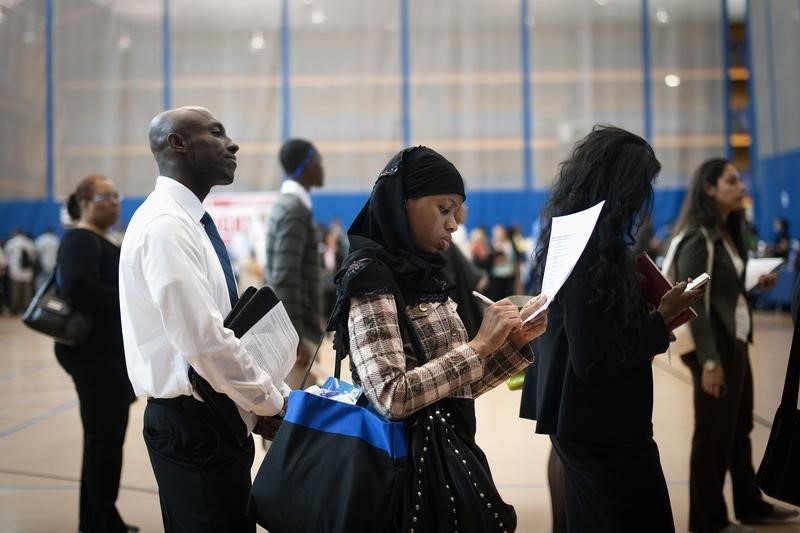By Geoffrey Smith
Investing.com -- Job growth in the U.S. blew past expectations in January, the latest in a series of bewilderingly strong data from the labor market and a strong reality check to hopes for a quick turn in the Federal Reserve's interest rate cycle.
The Labor Department said nonfarm payrolls grew by 517,000 through the middle of the month, abruptly snapping a four-month trend of slowing job gains. Analysts had expected a further slowdown to 185,000, which would have been the slowest job growth in nearly two years.
December's payroll data were also revised up by 37,000 and November's by 34,000, reinforcing the surprise in the January numbers. As such, the numbers provided further evidence that a labor market that overheated as the pandemic eased is still only slowly losing steam, despite a succession of big interest rate hikes by the Fed.
The dollar gained over 0.5% in response, while stock futures fell as traders were forced to re-evaluate bets that an economic slowdown will force the Fed will cut interest rates later this year. By 09:05 ET (14:05 GMT), Dow Jones futures were down 237 points or 0.7%, while S&P 500 futures were down 1.3%, and Nasdaq 100 futures were down 2.2%.
"The idea that Fed cycle is ending sooner than ECB or BOE may be in question," said Kathy Jones, chief fixed-income strategist with Charles Schwab. Fed chair Jerome Powell had raised hopes of a 'pivot' later this year at his press conference when he argued that a "disinflationary trend" had already begun and had only pushed back mildly against suggestions of a first cut before year-end.
Analysts said the details of the report raised the likelihood that the Fed can achieve a 'soft landing' for the economy, rather than the recession that many fear. Average weekly hours worked rose to 34.7, the highest in 10 months, amid anecdotal evidence of people taking more side jobs to claw back with extra earnings the spending power that they lost to inflation last year.
Average hourly earnings, meanwhile, rose only a modest 0.3%, well below the pace of gains seen earlier last year.
"If we were to design a report to support the Fed’s immaculate disinflation narrative, this would probably outdo it," said Megan Greene, chief economist with the Kroll Institute, via social media.
As is usual in January, the Bureau of Labor Statistics used updated statistics on the U.S. population to compile its data. This led to an upward revision of 871,000 in the civilian labor force, an 810,000 rise in employment, and a 60,000 rise in unemployment. While the jobless rate was unaffected at a historically low 3.4% of the workforce, the labor force participation rate ticked up to 62.4% from 62.3%.
